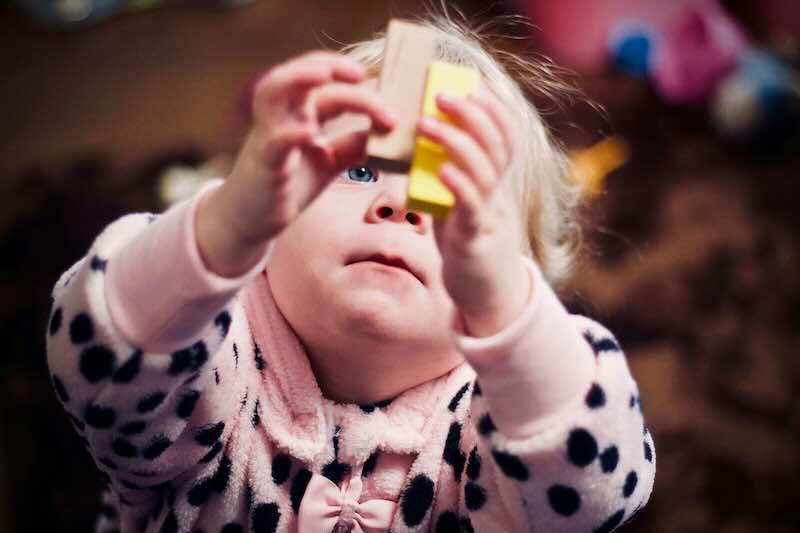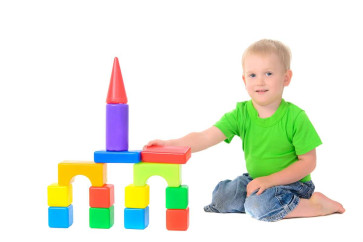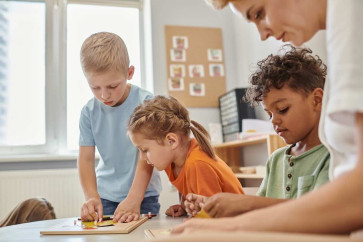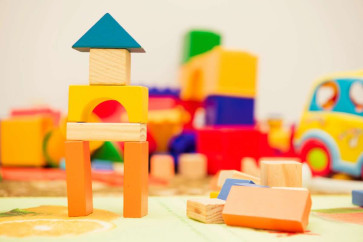Sensory toys play a crucial role in child development, often celebrated for their effectiveness in enhancing sensory processing, fine motor skills, and cognitive development. Beyond these well-known benefits, sensory toys also offer several lesser-known advantages that significantly contribute to a child's holistic development, especially when viewed through the Montessori lens which emphasizes self-directed, tactile learning. Here are nine surprising benefits:
Benefits of Sensory Play
1. Promotion of Mindfulness and Emotional Regulation Through Sensory Play:
Sensory toys can help children practice mindfulness and emotional regulation. For instance, activities that require focus on tactile sensations can encourage children to be present and fully engaged in the moment, reducing anxiety and promoting calmness. This aspect of sensory play can be particularly beneficial for children with attention deficit hyperactivity disorder (ADHD) or autism spectrum disorder (ASD), offering them a grounding experience.
Examples: Weighted toys and fidget tools can help children focus on the present moment and manage their emotions effectively. A weighted lap pad, for instance, can provide comforting pressure that helps children feel grounded.
Reference: Singh et al. (2009) found that mindfulness interventions, which can include sensory-based activities, significantly reduced anxiety and improved emotional regulation in children.
2. Enhanced Problem-Solving Skills and Creativity with Sensory Toys:
While sensory toys are known for their role in cognitive development, their specific contribution to creative problem-solving and imaginative thinking is often overlooked. Engaging with open-ended sensory materials like sand, water, or play dough encourages children to explore various outcomes, experiment with cause and effect, and invent new ways of interacting with the materials, thus fostering creativity and innovative problem-solving skills.
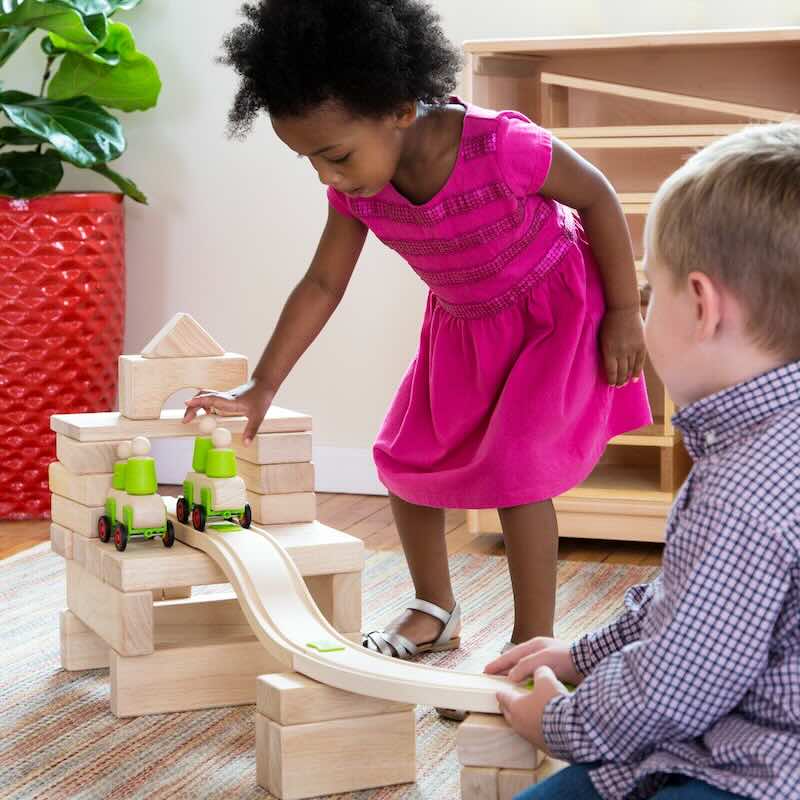
Examples: Building blocks and shape sorters not only engage children's sensory faculties but also challenge them to think creatively and solve problems. For instance, magnetic tiles allow children to explore spatial relationships and symmetry, stimulating creative design and problem-solving.
Reference: Scott (2010) in Psychology of Aesthetics, Creativity, and the Arts discusses how creative engagement, including play with open-ended materials, fosters problem-solving abilities and innovation.
3. Language Development and Communication Skills:
Sensory play can significantly impact language acquisition and communication skills in a more indirect yet profound way. As children describe their sensory experiences, compare textures, or follow directions in sensory-based activities, they expand their vocabulary and improve their ability to express thoughts and ideas. This expressive language development is crucial for effective communication and social interactions.
Examples: Story stones and sensory bins filled with objects that children can describe are excellent for enhancing vocabulary and communication. Using these, children can articulate their experiences, describe textures, shapes, and actions, thereby enriching their language skills.
Reference: Wasik & Iannone-Campbell (2012) in Early Childhood Education Journal highlight the importance of interactive play, including sensory activities, in supporting language development and communication skills.
4. Cultural Awareness and Diversity Appreciation:
Sensory toys that incorporate elements from various cultures, such as musical instruments, fabrics, or food items, can introduce children to the world's diversity from an early age. This exposure fosters a greater understanding and appreciation of cultural differences, encouraging empathy and inclusivity. For instance, using materials that reflect a variety of skin tones, textures, and cultural symbols can broaden children's perspectives and promote a more inclusive worldview.
Examples: Dolls and figurines representing various cultures, along with musical instruments from around the world, like djembes or maracas, introduce children to the diversity of human experience, promoting cultural awareness and empathy.
Reference: Harkness & Super (2010) in Parenting Across Cultures discusses how exposure to culturally diverse toys and activities can enhance children's understanding and appreciation of global diversity.
5. Strengthening Family and Peer Bonds:
Sensory play is not only beneficial for individual development but also for strengthening social connections. When children engage in sensory activities with family members or peers, it promotes cooperation, turn-taking, and empathy. These shared experiences can enhance emotional bonds and provide opportunities for children to learn from one another, observe different approaches to problem-solving, and develop a sense of community.

Examples: Cooperative board games and group sensory activities, like a communal sand or water table, encourage interaction, sharing, and collaboration among children and their family members, strengthening social bonds.
Reference: Ginsburg (2007) in the American Journal of Play outlines the critical role of play in building strong family and peer relationships, emphasizing cooperative and interactive play's contribution to social development.
6. Development of Social Justice Awareness:
Sensory toys and activities that incorporate elements from different social contexts can subtly introduce concepts of fairness, equity, and social justice to young minds. For instance, cooperative games and activities that highlight collaboration over competition can teach children about the importance of working together, sharing resources, and understanding diverse perspectives, laying the groundwork for a more empathetic approach to social interactions.
Examples: Role-playing games and storybooks that include themes of fairness, inclusion, and diversity can foster a sense of justice and empathy. Toys that simulate real-life scenarios where children can act out various roles also contribute to this understanding.
Reference: DeVries & Zan (1995) in Moral Classrooms, Moral Children discuss how role play and interactive games can introduce and reinforce concepts of fairness and equity among young learners.
7. Enhancement of Attention Span and Concentration:
While sensory toys are often used to stimulate sensory exploration, they also have the lesser-known benefit of enhancing a child's attention span and concentration. Engaging with sensory materials that are interesting and meaningful to the child can encourage longer periods of focused play. This sustained engagement not only improves attention but also contributes to deeper learning experiences and cognitive development.
Examples: Puzzles and bead threading activities require children to focus and persist in completing a task, thereby enhancing their attention span and concentration. These activities offer tangible goals and satisfying outcomes for sustained engagement.
Reference: Diamond & Lee (2011) in Science discuss the importance of engaging activities, including those with a sensory component, in improving executive functions such as attention and concentration in children.
8. Facilitation of Transition and Change Management:
Transitions and changes can be challenging for children, and sensory toys can play a unique role in easing these processes. Familiar sensory activities provide a sense of comfort and continuity that can help children navigate through changes in routines, environments, or even developmental stages. The reassuring nature of sensory play can make transitions less stressful and more manageable for children, supporting emotional resilience.
Examples: Sensory toys that are consistent and familiar, like a favorite texture book or a calming glitter jar, can provide comfort during transitions, helping children to manage changes and new experiences more effectively.
Reference: Perry & Szalavitz (2006) in The Boy Who Was Raised as a Dog highlight how familiar and comforting sensory experiences can help children navigate through stressful transitions and build resilience.
9. Encouragement of Eco-Consciousness and Sustainability Awareness:
Incorporating natural materials and elements into sensory play can foster an early appreciation for the environment and the importance of sustainability. Activities that involve exploring textures, sounds, and sights of nature encourage children to value the world around them, instilling a sense of responsibility for its care. This can lead to the development of eco-conscious behaviors from a young age, promoting a lifelong commitment to environmental stewardship.
Examples: Toys made from natural materials, like wooden blocks or cotton play mats, not only offer sensory experiences but also teach children about the importance of sustainability and caring for the environment.
Reference: Louv (2008) in Last Child in the Woods emphasizes the importance of connecting children with nature through play, including the use of natural materials, in fostering environmental stewardship.
Benefits of Sensory Toys for Autism
Children on the autism spectrum often experience the world in unique and sometimes overwhelming ways. Sensory toys can help lessen these daily challenges and provide therapeutic benefits at home, in the classroom, or during therapy sessions. Here are some key advantages of using sensory toys to support individuals with autism:
-
Enhanced Sensory Regulation
Many children with autism struggle to filter and process sensory input such as sights, sounds, or textures. Sensory toys are specifically designed to stimulate or soothe one or more of the senses in a controlled way. This helps children learn to self-regulate and remain calm in stimulating environments. -
Improved Focus and Attention
Engaging with sensory toys like stress balls, fidget spinners, or squishy objects can help channel excess energy. When this energy is directed into a safe, tactile activity, children often find it easier to concentrate on tasks or follow instructions. -
Development of Motor Skills
Activities like squeezing, stretching, or manipulating sensory toys help improve fine motor skills and hand-eye coordination. Children learn to develop muscle control and practice precision when grasping or pinching objects—skills necessary for everyday tasks such as writing, buttoning clothes, and using utensils. -
Emotional Calm and Self-Soothing
Autism can sometimes lead to emotional dysregulation—strong emotional reactions to seemingly small triggers. Sensory toys that provide repetitive or rhythmic feedback (e.g., weighted blankets, vibrating toys, or plush sensory mats) can help children de-escalate, reducing anxiety and promoting a sense of calm. -
Encouragement of Positive Social Interactions
Sensory toys can serve as conversation starters or tools to guide cooperative play. By sharing sensory experiences, children with autism may feel more comfortable engaging with peers and building friendships in a way that feels safe and familiar. -
Support in Routine Changes
Changes in routine or unexpected events can cause distress for a child on the autism spectrum. Having a reliable sensory toy on hand can provide a consistent, comforting element that makes these transitions less intimidating, fostering flexibility and confidence in new or unexpected situations.
Overall, sensory toys can make a significant difference in a child’s social, emotional, and developmental growth. By addressing sensory processing needs, these toys not only help improve self-regulation but also encourage skill-building and positive interactions in daily life.
Engaging Sensory Toys for Kids
Explore our wide range of sensory toys designed to stimulate touch, sight, and sound. These toys help build essential sensory skills while making playtime fun and educational.
Discover Sensory Toys
